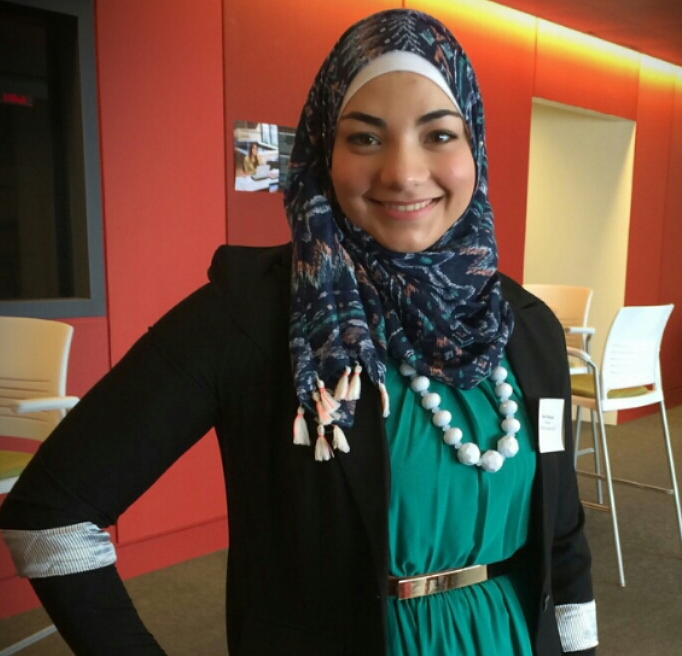Celebration of Scholars
"Two-ness" and the Muslim American Identity
 Name:
Manar Mohammad
Name:
Manar Mohammad
Major: English; Bio/Chem minors
Hometown: Kenosha, WI
Faculty Sponsor:
Other Sponsors:
Type of research: Independent research
Abstract
The material reality of the veil in Islam provides
an opportunity for examining the metaphoric veil first described by W.E.B.
Dubois. Wearing a veil opens a cultural dialogue in the U.S. by bridging both
common misconceptions concerning gender stereotypes that Westerners impose on
Islam and misunderstandings of U.S. conflation of Muslim and Arab culture. In The Souls of Black Folk, W.E.B. Dubois
describes a veil between blacks and whites, an idea that Langston Hughes also
discusses in his poetry. Dubois expresses the idea of “two-ness” in an
individual, in which two souls and two generators of ideas live in one body. “Two-ness”,
the veil, and double consciousness suggest deeper symptoms of Western
intolerance that divide culture from within. U.S. culture wears 'veils'
unconsciously by keeping itself largely ignorant of the distinction between the
meanings of ‘Arab’ and ‘Islamic,’ and imposing “veils” on Muslim practices,
separating Muslim from American. By unpacking how conscious use of the veil
relates to human struggle within the world to identify and separate specific
cultures, I will sketch the Arab American experience of “two-ness” in the U.S
and compare it to a poem on the veil that I wrote describing my experience with
this “two-ness” here in America.
Submit date: March 13, 2015, 3:52 p.m.
